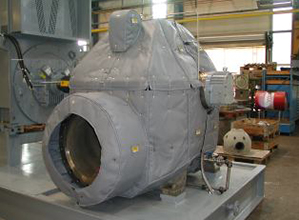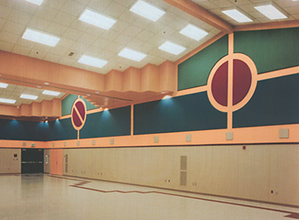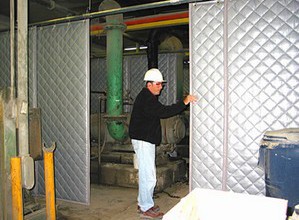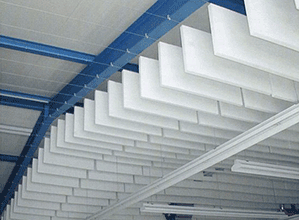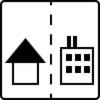Air Compressor Noise Solutions
Every day we hear from a client that has a noisy air compressor. The complaint is usually that it makes too much noise and affects the employees that work near it. A sound curtain is one of the most effective air compressor noise solutions.
First, you determine where you are going to locate the compressor unit. If your unit is already installed, you will have to consider its location and whether or not it can be relocated. The location of the unit will determine how many walls your sound curtain enclosure will need.
| Unit Location | Number of Sides Required |
| In a Corner | 2 sides |
| Against a Wall | 3 sides |
| In the Center of the Room | 4 sides |
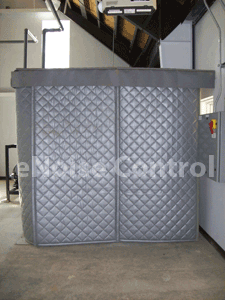
Next, you will need to determine the clearances around the unit required for service. Choose an ample distance from the wall to allow access behind the unit. For most vertical and horizontal tank air compressors, 12″-24″ clearance is typically sufficient. The sound curtain material is very flexible and can easily be removed or pulled aside for major maintenance.
Thirdly, you need to consider how the curtains will hang on the frame. The most cost effective options are ceiling suspended and wall mounted. If your ceilings are 20 feet high, this may not be practical. Floor mounted columns provide the simplest installation.
The ideal height of an open top sound enclosure without a roof is double the height of the noise source or 48″ minimum. For example, if your compressor motor is 4 feet from the finished floor, the open top sound curtain enclosure will be 8 feet high.
If designed correctly, an open top sound curtain enclosure will reduce the noise by 10 – 14 dBA. A 10 dBA reduction is equivalent to reducing the perceived loudness by half or lowering the noise by 50%.
If you require higher reduction, it is common to put a roof on the enclosure. This will only require the enclosure height to be 12-24 inches from the top of the compressor. The roof panels are rigid and rest on the upper track assembly. They are easily removable in case you need access to the enclosure. To cover the area from the top of the roof to the top of the curtains where the hook, trolleys, and track are located, we provide a sound barrier valance that adheres to the roof with Velcro and provides a good acoustical seal.
Heat build up inside the enclosure is often a concern. We offer silenced ventilation baffles to address this issue. The ventilation baffles are long elbow silencers that are factory sewn to one or multiple side curtain panels or field mounted on the roof. The baffles force the intake or exhaust air to take a diffracted path out of the enclosure. Additionally, the baffles are lined with absorptive material to reduce the sound exiting the enclosures while still allowing passive airflow. The side ventilation baffle typically mounts low on the side of the enclosure and provide a roof ventilation baffle. As the hot air rises and exits out of the roof baffle, cool outside air is drawn in through the side vent baffle.
Sound curtain enclosures also provide accessibility to the air compressor. Depending on the size of the enclosure, you may be able to use a double roller track system to allow panels to slide left and right behind one another for maintenance and accessibility. This feature requires at least one side being longer than 48″ wide. If the enclosure wall is 48″ or less, you can access the inside of the enclosure through a vertical seam in the sound curtains or remove the panel entirely.
eNoise Control believes that sound curtain enclosures are the best noise control solution for air compressors on the market. We can design enclosures for any size and manufacturer of equipment. Call eNoise Control to discuss your air compressor enclosure application.
